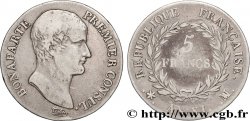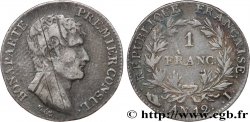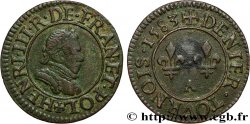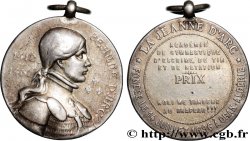Live auction - fme_1047835 - CONSULATE Médaille, Pacification de la Suisse - Napoléon Bonaparte, premier Consul par Dupré
You must signin and be an approved bidder to bid, LOGIN TO BID. Accounts are subject to approval and the approval process takes place within 48 hours. Do not wait until the day a sale closes to register. Clicking on "BID" constitutes acceptance of the terms of use of cgb.fr private live auctions.
Bids must be placed in whole Euro amounts only. The sale will start closing at the time stated on the item description; any bids received at the site after the closing time will not be executed. Transmission times may vary and bids could be rejected if you wait until the last second. For further information check the Live auction FAQ
All winning bids are subject to a 18% buyer’s fee.
All winning bids are subject to a 18% buyer’s fee.
| Estimate : | 120 € |
| Price : | 60 € |
| Maximum bid : | 70 € |
| End of the sale : | 26 August 2025 17:00:54 |
| bidders : | 1 bidder |
Type : Médaille, Pacification de la Suisse - Napoléon Bonaparte, premier Consul par Dupré
Date: (1738-1803)
Metal : alloy
Diameter : 53 mm
Orientation dies : 12 h.
Engraver DASSIER Jacques-Antoine (1715-1759) / DUPRÉ Augustin (1748-1833)
Weight : 105,02 g.
Edge : lisse
Puncheon : sans poinçon
Coments on the condition:
Coups et rayures. Porosité du métal
Obverse
Obverse legend : SALUS REIPUBLICAE.
Obverse description : Allégories féminines de la Paix à gauche tenant une branche d’olivier, et de la Justice à droite tenant un glaive et une balance. Représentation de la Discorde allongée au sol. Autel au centre. Signé : I. D. F..
Obverse translation : Sécurité de la République.
Reverse
Reverse legend : NAPOLEON BONAPARTE * PREM.R CONSUL DE LA REP. F..
Reverse description : Buste de profil à droite de Napoléon Bonaparte, premier consul.
Commentary
Nous connaissons la combinaison de cet avers avec la légende en 8 lignes de 1738 sous Louis XV pour la pacification de la Suisse, ainsi que celle avec les deux allégories féminines de Dassier en 1738 (CONCORDIA GENEVAE RESTITUTA) mais nous ne connaissions pas cette combinaison avec le buste de Napoléon Bonaparte, premier consul, d’Augustin Dupré. On retrouve par ailleurs ce portrait avec le monument de Jeanne d’Arc rétabli à Orléans en 1803.
We know the combination of this obverse with the 8-line legend of 1738 under Louis XV for the pacification of Switzerland, as well as that with the two female allegories of Dassier in 1738 (CONCORDIA GENEVAE RESTITUTA) but we did not know this combination with the bust of Napoleon Bonaparte, first consul, by Augustin Dupré. We also find this portrait with the monument of Joan of Arc restored in Orléans in 1803
We know the combination of this obverse with the 8-line legend of 1738 under Louis XV for the pacification of Switzerland, as well as that with the two female allegories of Dassier in 1738 (CONCORDIA GENEVAE RESTITUTA) but we did not know this combination with the bust of Napoleon Bonaparte, first consul, by Augustin Dupré. We also find this portrait with the monument of Joan of Arc restored in Orléans in 1803








 Report a mistake
Report a mistake Print the page
Print the page Share my selection
Share my selection Ask a question
Ask a question Consign / sell
Consign / sell
 Full data
Full data















